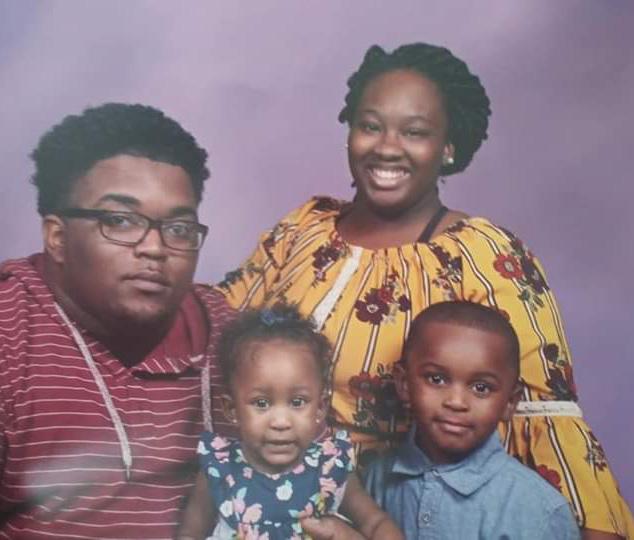
18 minute read
Alzheimer’s Awareness
Alzheimer’s disease is a progressive form of dementia. Dementia is a broader term for conditions caused by brain injuries or diseases that negatively affect memory, thinking, and behavior. These changes interfere with daily living. According to the Alzheimer’s Association, Alzheimer’s disease accounts for 60 to 80 percent of dementia cases. Most people with the disease are diagnosised after age 65. If diagnosed before then, it’s generally referred to as early onset Alzheimer’s disease.
Alzheimer’s disease is a chronic ongoing condition. Its symptoms come on gradually and the effects on the brain are degenerative, meaning they cause slow decline. There’s no cure for Alzheimer’s, but treatment can help slow the progression of the disease and may improve quality of life. Anyone can get Alzheimer’s disease, but certain people are at a higher risk. This includes people over age 65, those with a family history of the condition, and genetics. One gene in particular is of interest to researchers, Apolipoprotein E (APOE), has been linked to the onset of Alzheimer’s symptoms in older adults. Blood tests can determine if one has this gene, but keep in mind that even if someone has this gene, they may not get Alzheimer’s The
Advertisement

opposite is also true: Someone may still get Alzheimer’s even if they don’t have the gene. There’s no way to tell for sure whether someone will develop Alzheimer’s. Other genes could also increase the risk.
Alzheimer’s and dementia aren’t the same thing. Alzheimer’s disease is a type of dementia. There’s no single expected outcome for people with Alzheimer’s. Some people live a long time with mild cognitive damage, while others experience a more rapid onset of symptoms and quicker disease progression. Each person’s journey with Alzheimer’s disease is different.
Dementia is a broader term for conditions with symptoms relating to memory loss such as forgetfulness and confusion. Dementia includes more specific conditions, such as Alzheimer’s disease, Parkinson’s disease, traumatic brain injury, and others, which can cause these symptoms.
Everyone has episodes of forgetfulness from time to time. But people with Alzheimer’s disease display certain ongoing behaviors and symptoms that worsen over time. These can include memory loss affecting daily activities, such as an ability to keep appointments; trouble with familiar tasks, such as using a microwave; difficulties with problemsolving; trouble with speech or writing; becoming disoriented about times or places; decreased judgment; decreased personal hygiene; mood and personality changes; and withdrawal from friends, family, and community Symptoms change according to the stage of the disease.
Alzheimer’s is a progressive disease, which means the symptoms will gradually worsen over time. Alzheimer’s is broken down into seven stages:
STAGE 1. There are no symptoms at this stage but there might be an early diagnosis based on family history. STAGE 2. The earliest symptoms appear, such as forgetfulness. Stage 3. Mild physical and mental impairments appear, such as reduced memory and concentration. These may only be noticeable by someone very close to the person. STAGE 4. Alzheimer’s is often diagnosed at this stage, but it’s still considered mild. Memory loss and the inability to perform everyday tasks is evident. STAGE 5. Moderate to severe symptoms require help from loved ones or caregivers. STAGE 6. At this stage, a person with Alzheimer’s may need help with basic tasks, such as eating

and putting on clothes. STAGE 7. This is the most severe and final stage of Alzheimer’s. There may be a loss of speech and facial expressions.
As a person progresses through these stages, they’ll need increasing support from a caregiver. A doctor will likely do several tests to determine the diagnosis, including mental, physical, neurological, and imaging tests. For early to moderate Alzheimer’s, the doctor may prescribe medications such as donepezil (Aricept) or rivastigmine (Exelon). These drugs can help maintain high levels of acetylcholine in the brain, a type of neurotransmitter that can help aid memory.

To treat moderate to severe Alzheimer’s, a doctor may prescribe donepezil (Aricept) or memantine (Namenda). Memantine can help block the effects of excess glutamate, a brain chemical that’s released in higher amounts in Alzheimer’s disease and damages brain cells. The doctor may also recommend antidepressants, anti-anxiety medications, or antipsychotics to help treat symptoms related to Alzheimer’s, such as depression, restlessness, aggression, agitation, and hallucinations.

In addition to medication, lifestyle changes may help manage the condition. Some believe that vitamin E can help prevent the decline in mental abilities, but more research is needed. Researchers are focusing on overall healthy lifestyle habits as ways of preventing cognitive decline. Some suggestions are quit smoking, exercise regularly, cognitive training exercises, a plant-based diet, consume more antioxidants, and maintain an active social life.
If a loved one has Alzheimer’s, a family member may consider becoming a caregiver. This is a fulltime job that’s typically not easy, but can be very rewarding. Being a caregiver takes many skills, such as patience, creativity, stamina, and the ability to see joy in the role of helping someone you care about live the most comfortable life they can. As a caregiver, it’s important to take care of yourself as well as your loved one. With the responsibilities of the role can come an increased risk of stress, poor nutrition, and lack of exercise. If you choose to assume the role of caregiver, you may need to enlist the help of professional caregivers as well as other family members to help.
Source: https://www.healthline. com/health/alzheimers-disease
2020 Essential Service: PARAMEDIC by Brenda Wilder
Lisa Valadie of Madison, MS is a paramedic and Community Educator for Madison Fire Department. She has 4 children and 2 granddaughters. Lisa has been an EMS since 1987 and a paramedic since 1989. Her Mom was a nurse, so Lisa grew up listening to medical stories and watching nurses caring for others. Lisa knew she was interested in the medical field, although nursing didn’t really interest her. Growing up watching Emergency, a show about the Los Angeles County Fire Department, Lisa was aware that type work appealed to her. In June of 1987, she was with her family, and they were first on the scene of a car crash. Lisa panicked and did not like the feeling of not being able to help. After researching, Lisa found an EMT class that started later that year and signed up. Looking back now, Lisa realizes God had His hand in her career and still leads her today!
Lisa attended Ms. Gulf Coast Community College in Pass Christian and began working in Biloxi with Amserv Ambulance, then later moved to Mobile Medic, based in Gulfport. It was there that Lisa furthered her education in paramedic school, and she has enjoyed the relationships she’s developed and the lives she’s changed through the years.
“I think the biggest responsibility we have is to take care of ourselves spiritually, emotionally, and physically,” said Lisa. “With this job, you don’t learn everything you need in school, and that’s it. It’s a constant learning process: new skills, new drugs, new technology. One of the things I enjoy is working with new EMTs. I feel we can learn from each other, combining my old school ways and their new ways.”
Lisa’s typical day has changed during the past few months and reminds her of Groundhog Day! Being with the Madison Fire Department for 14 years, Lisa has gone from working in ambulances to a fire department, which was a good change for her. “I’ve been blessed with a great chief and fire brothers! So many of them have helped me on my spiritual journey. My job as Community Educator is fun. I have the opportunity to talk to schools,

teachers, churches, and civic groups on safety and injury prevention. One of the programs we have in Madison is teaching our community children CPR, first aid for choking, and other valuable first aid knowledge. Once again, I feel it’s God’s intervention,” said Lisa.
In 1999 Lisa was at her doctor’s office, and a headline about car seat misuse and car seat technicians in Readers Digest caught her attention. “At the time, I was working with Rankin Medical Center on ambulance service, and since I had 4 children, I thought I knew everything about car seats; however, I wanted to know more and
thought this was something, as a paramedic, that I needed to learn so I could teach the knowledge to others. Soon after that, I was in the first car seat technician class in the state. It was a week-long experience and one of the most important classes of my career! After I became certified, I reached out to fire departments and EMS agencies on what we need to look for at crashes and how to better assess patients involved in crashes. That class led to the job I have now. I’ve also worked with MDOT and helped develop the Rover Rollover Simulator program,” shared Lisa.
“Over the years, I’ve worked on many calls. People want to know what the worst thing I’ve seen. Trust me, there are plenty, but my answer is ‘the call that could have been prevented, not wearing seat belts, no smoke alarms in a house fire, or someone that has drowned.’ That is one reason why I love my job, I’m teaching others how to make better choices and giving people safety measures about which to think. Will they listen? Hopefully! If I can reach a few, I’ve done my job!”
Lisa says the calls that she still thinks include: the Jackson Fire Dept shooting, the Pearl High School shooting, and Jansen Wright. Jansen was a 6 year old from Brookhaven. His family was moving to Georgia and coming back to load household items. It was raining, and the vehicle he was riding in hydroplaned on I-20 West near Brandon. Jansen was ejected and killed. At the time, Lisa was organizing a lot of car seat checkpoints and educating whoever would listen! When something like this happens, Lisa thinks about not having done enough and how could she have reached this family and prevented this tragedy. When Mississippi was trying to pass a booster seat law, she reached out to Jansen’s mom, Julie, who helped Mississippi get a new booster seat law passed. Julie said at the scene that night that Jansen loved animals and wanted to be a veterinarian, so she brought a bag of stuffed animals to give to pediatric patients. Lisa still

has a stuffed cow (because that was Jansen’s favorite) to always remind her to keep working on making a difference.
Lisa wants the public to be educated on car seat regulations, since technology has changed. She advises reading the owner’s manual for your vehicle and child restraint guidelines. Keep a little one rear facing until they are at least 2 years old. Keep them in booster seats until the seat belt fits them, probably around 8 years of age. No child should ride in front seat until they are at least 13 years of age! Safekid.org provides tips for parents and suggestions for finding a technician such as Lisa to assist.
When asked about how one can get started in EMS training, Lisa said EMS is a good stepping stone to whatever one is interesting in doing! The class is one semester at a community college and teaches advanced first aid and what to do in an emergency (something everyone needs to know!). Having a mentor is always good, and one needs to be strong physically, so exercise and eat healthy!
One of Lisa’s favorite bible quotes is Isiah 40:31. When she reads scripture, she feels as if it is talking to her, like God knows what she needs to hear. Lisa wrote a prayer that she keeps with her: “Lord, give me the strength, compassion, and knowledge to do my job well, physical strength to carry the weak and injured, and compassion to be nonjudgmental. Instead of looking at the surface, help me to look deeper. Give me knowledge and wisdom to perform the skills I have studied and learned. No matter what tasks or obstacles You may put before me, I will be able to handle them with courage, knowing You are with me! Amen.”
WHAT IS FATHER’S DAY And Why Do We Celebrate It?


Kaitlyn Chamberlin
Father’s Day is celebrated by families all around the world— and this year is no exception. While it’s certainly going to look different due to social distancing measures, Father’s Day will still be happening all around the world. While your dad probably enjoys being showered with gifts and love on this special day, that wasn’t the case with the average dad back when the day was first created over 100 years ago. Father’s Day is on June 21 this year.
The history of Father’s Day is quite long and controversial. Mother’s Day actually came first (it was celebrated as far back as the 1860s and declared a national holiday in 1914) and paved the way for Father’s Day. The history of Father’s Day goes back to 1908 when a church in West Virginia held a sermon to honor 362 men who were killed the previous year in a coal mining explosion. This was the country’s first-ever event to strictly honor fathers, but it was just a one-and-done thing.
The following year, however, a woman named Sonora Smart Dodd started her quest to establish Father’s Day as a national holiday. Dodd was one of six raised by her single father and thought fathers should be honored the same way as mothers. After a year of petitioning her local community and government, Dodd’s home state of Washington celebrated its first official Father’s Day on June 19, 1910. Over the years, the celebration of Father’s Day spread from state to state, and after a long fight it was finally declared a national holiday in 1972 when President Richard Nixon signed it into law.
Woman to Woman With Joanne extends a Happy Father’s Day to all Father’s and Grandfathers!
Dad quotes: “Dad is, and always will be, my living, breathing superhero.” –Bindi Irwin, daughter of the late Steve Irwin.
“I used to wonder why I had hair on my legs, but now I know it’s for my toddlers to pull themselves up with as I scream in pain.” Comic Jim Gaffigan.
“By the time a man realizes that maybe his father was right, he usually has a son who thinks he’s wrong.” –Charles Wadsworth, classical pianist.
“You can tell what was the best year of your father’s life because he seems to freeze that clothing style and ride it out.” –Jerry Seinfeld.
“My father didn’t tell me how to live; he lived, and let me watch him do it.” –Clarence Budington Kelland, author.
“When I was little my dad had me convinced the ice cream truck only played music when it was sold out.” –Anonymous.
“Any man can be a father but it takes someone special to be a dad.” –Anne Geddes.
“The only thing better than having you as a dad is my kids getting to have you as a granddad.” –Anonymous.
“Being a great father is like shaving. No matter how good you shaved today, you have to do it again tomorrow.” –Reed Markham, educator and author.
“Before I got married I had six theories about raising children; now, I have six children and no theories.” –John Wilmot, 2nd Earl of Rochester.
“My father gave me the greatest gift anyone could give another person, he believed in me. –Jim Valvano, college basketball coach.
“I would say my greatest achievement in life right now—my greatest achievement, period, and I’m still trying to achieve it—is to be a wonderful father to my kids.” —Bo Jackson. Thank you for being an amazing Grandpa. Thank you for also always giving me lectures when I needed them. (Haha) I love you Pa. Happy Father’s Day. Love Mya


Leesaw Jordan

To My Papa To the best guy I’ve know. No matter what happens, may God shine his light upon you. I love you so much. Love JaQuan Frelix (Quan) My mountain top. There has always been a glow about you. Whenever the sun shines, so does your smile. Please stay at peace with yourself. Happy Father’s Day. Love Jessica, JaQuan, Jr. and Madison.


Leonard Sandifer
I love you Dad. You have always been the best example of a hardworking man and father who provides for his family. I love you always and Happy Father’s Day! Love, Joanne (Spoony)
Leyon Sandifer My brother. You have always been there for me when I needed you most, even when I didn’t know I did. You are an amazing man and an amazing father and I am so proud of you. Love you Big Brother. Joanne

Naomi Short and Robert Curtis Short, Sr Robert Curtis Short, Sr., is a courageous and diligent Evangelist, grandfather, father, husband, brother, uncle, organic vegetable farmer, and comedian. I am so thankful that he spent time with me to learn piano and other musical skills. He has shown outrageous encouragement and been a wonderful teacher, from life skills to gardening skills . I am grateful for his compassion and love! Naomi Short

Willie Jones President & CEO

DEPENDABLE SOURCE CORP. OF MS
Where Driver Needs Are A Priority
Dependable Source Corp. of MS is a provider of driver workforce solutions to the transportation Industry. We provide experienced, professional and DOT certified commercial drivers to maufacturers, distributors and motor carriers throughout the South. Launched in 1995, Dependable Source Corp. of Mississippi is a respected leader in the transportation industry and is considered one of the best in the commercial trucking field.
REMEMBER WHAT IT WAS LIKE TO HAVE SOMEONE YOU COULD COUNT ON? INDUSTRIAL/WAREHOUSE STAFFING

GOOD PEOPLE - Where you need them, when you need them.
Whatever the need, let DEPENDABLE SOURCE be YOUR SOURCE FOR ALL OF YOUR
INDUSTRIAL/WAREHOUSE STAFFING NEEDS.
• Assemblers • Warehouse Personnel • Shipping/Receiving • Packaging,Stocking • Logistics Personnel/General Labor
SPRINGTIME BEIGNETS
Ingredients • 1/4 cup butter, room temperature • 3/4 cup sugar • 1/2 teaspoon salt • 1/2 teaspoon ground cinnamon • 1/2 cup plus 2 tablespoons warm water (120° to 130°), divided • 1/2 cup evaporated milk • 1 package (1/4 ounce) quick-rise yeast • 1 large egg • 3-1/4 to 3-3/4 cups all-purpose flour • Oil for deep-fat frying • Confectioners’ sugar • Berries and whipped topping, optional
& BERRIES
Directions • Beat butter, sugar, salt and cinnamon until crumbly. Beat in 1/2 cup water and evaporated milk. In another bowl, dissolve yeast in remaining water; add to milk mixture. Beat in egg until blended. • Add 2 cups flour; mix until well blended. Stir in enough remaining flour to form a soft dough (dough will be sticky). Place in a greased bowl, turning once to grease the top. Cover; refrigerate 4 hours or overnight. • Bring dough to room temperature.
On a floured surface, roll dough into a 16x12-in. rectangle. Cut into 2-in. squares. In an electric skillet or deep fryer, heat oil to 375°. Drop beignets, a few at a time, into hot oil. Fry until golden brown, about 1 minute per side.
Drain on paper towels. Dust with confectioners’ sugar. If desired, serve with assorted berries and whipped topping.

Nutrition Facts 1 beignet: 74 calories, 3g fat (1g saturated fat), 7mg cholesterol, 36mg sodium, 10g carbohydrate (3g sugars, trace fiber), 1g protein.
Source: tasteofhome.com
NORTH AFRICAN CHICKEN AND RICE
Ingredients • 1 medium onion, diced • 1 tablespoon olive oil • 8 boneless skinless chicken Nutrition Facts
thighs (about 2 pounds) • 1 tablespoon minced fresh cilantro • 1 teaspoon ground turmeric • 1 teaspoon paprika • 1 teaspoon sea salt • 1/2 teaspoon pepper • 1/2 teaspoon ground cinnamon • 1/2 teaspoon chili powder • 1 cup golden raisins • 1/2 to 1 cup chopped pitted green olives • 1 medium lemon, sliced • 2 garlic cloves, minced • 1/2 cup chicken broth or water • 4 cups hot cooked brown rice

Directions • In a 3- or 4-qt. slow cooker, combine onion and oil. Place chicken thighs on top of onion; sprinkle with next 7 ingredients.
Top with raisins, olives, lemon and garlic. Add broth. Cook, covered, on low until chicken is tender, 4-5 hours. Serve with hot cooked rice.
• • Test Kitchen tipsHeavily spiced with a mixture of interesting ingredients, the cuisine from
North Africa may be a bit unfamiliar, but we know you’ll fall in love with the interesting new flavor combinations. • If olives aren’t your favorite, don’t leave them out entirely, but
go with 1/2 cup. 1 serving: 386 calories, 13g fat (3g saturated fat), 76mg cholesterol, 556mg sodium, 44g carbohydrate (12g sugars, 3g fiber), 25g protein.











